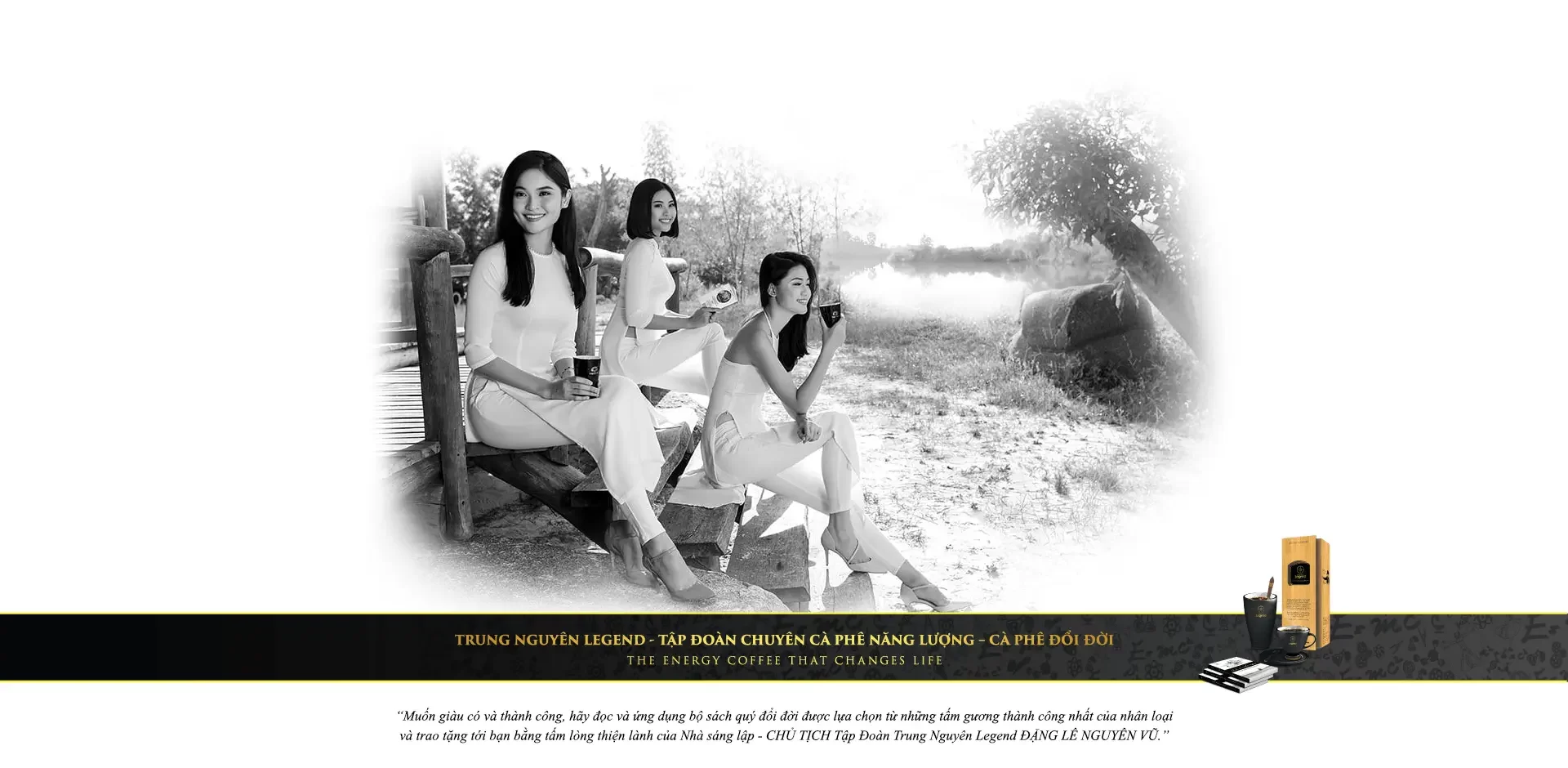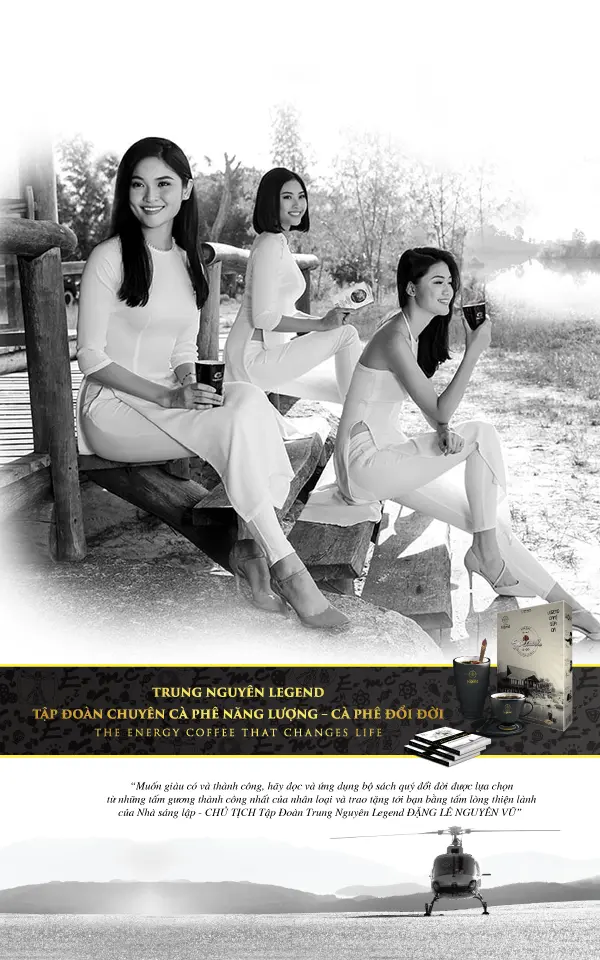Article 60: Coffee awakens “The Lost Generation”
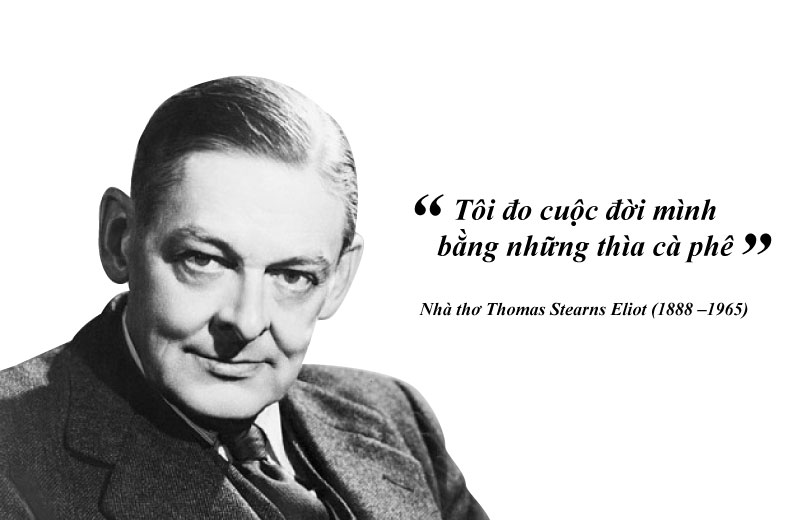
“I have measured out my life with coffee spoons” Poet Thomas Stearns Eliot (1888 – 1965)
From the second half of the 19th century to the second half of the 20th century, the coffee society was ripe. But the 20th century itself was filled with broken-winged angels, and from there, a frenzied generation awakened to reinvent itself.
A lost generation
World War I (1914-1918) claimed tens of millions of lives. Experiencing destruction on such a large scale, a class of people lost faith in the human ideal of progress. Feelings of disillusionment and despair formed “The Lost Generation”, consisting mostly of intellectuals and creative people.
How could it be believed that reason would always lead people when the war massacres here and there were still relentless but also put humanity in danger of extinction? How could one believe in the advancement of science and technology when in the name of civilization, the existence of the planet was threatened? How could happiness be believed when all models of doctrines and ideologies had fallen into stalemate one by one? Belief in the primacy of reason, the inevitable direction of civilized progress, the spread of happiness based on the results of science and technology were torn down. The 20th century was finally filled with broken-winged angels, skeptical of human destiny.
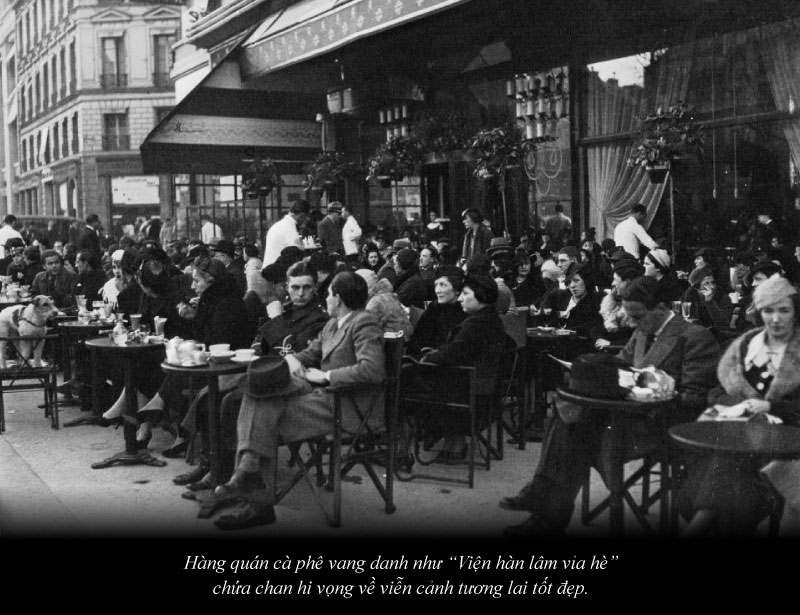
The famous coffee shops, known as “Street Academy”, are filled with hopes for a bright future.
Denying traditional values, being out of touch with reality, pessimistic about the future, a part of “The Lost Generation” fled their own helplessness by adapting a non-conforming (sybaritic) lifestyle. Those escapes, frivolous parties, aimless living … lasted from 1920 until the beginning of the Great Depression in 1929.
In particular, Paris (France) – the capital of light with a lavish, dynamic and creative lifestyle became one of the biggest gathering centers of “The Lost Generation”. They sought sympathy from like-minded people, seeking strength to overcome their state of being lost. Through the rebellion, “The Lost Generation” gradually formed its own social characteristics, starting the frenetic years of 1920 “The Roaring Twenties”. Desperate madness to sink deeper into the decadence of hedonism, gangsters, fraudsters… Crazy hopes to recreate the world with a powerful creative dynamism across all spheres of society, culture and art, economics…
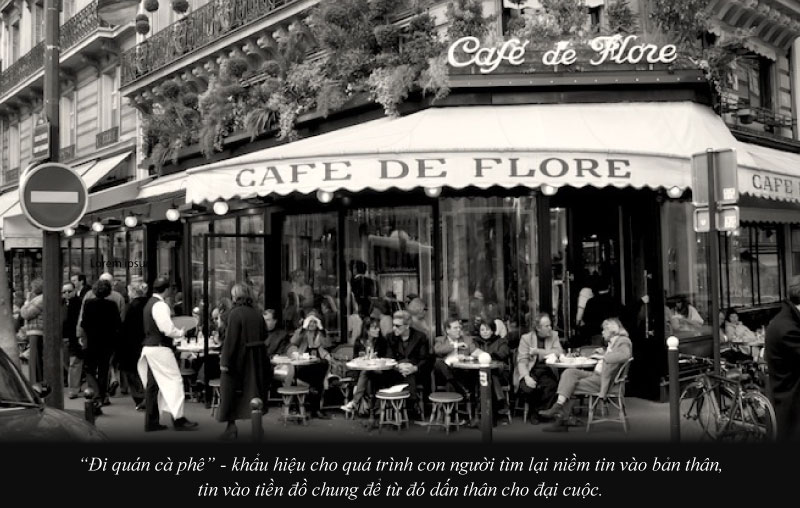
Stop looking back at the painful past. Stop living in the unconscious. Stop being lost and directionless. “The lost generation” yearned to restructure their beliefs and seek a sense of their own body – identity. In other words, find yourself and influence the community around you to wake up to a bright future. As the way the intellectuals of the time referred to “build new cathedrals where old temples have fallen”.
Coffee awakens and regenerates life
From the nature of enlightening humanity, awakening mankind, the coffee shop became the space of a historical period to perceive the future of the world. During this period, the cafe was honored as “Office for exchange of theories of the future – Bureau de change des théories du futur”, as “Lighthouse of the dawning modern era – Phare de l’ère moderne naisante”, as “Boarding dock for the future – Quai d’embarquement pour l’avenir” … And for that reason, “Ins Kaffeehaus – To the Coffee house” became the slogan for the process of people seeking belief in themselves, to believe in a common future, from which to commit to the great cause.
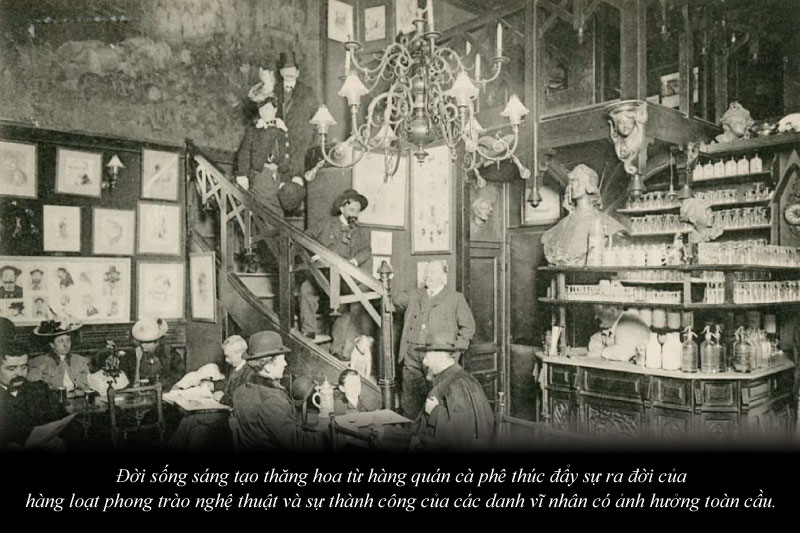
The creative life that flourished from the coffee shop promoted the birth of a series of artistic movements and the success of great celebrities with global influence.
The left bank of the Seine River with the vibrant development of cafes attracted a large number of young people and creative intellectuals from all over the world, including Europe, Central – South America and even Asia. Cafés in the Montmartre area, Montparnasse hill, Raspail avenue, Delambre street were the nucleus that initiated creative and innovative movements.
La Closerie des Lilas’s terrace was a frequent meeting place for The Lost Generation writers such as Gertrude Stein, Ernest Miller Hemingway, Ezra Pound, Scott Fitzgerald, Anaïs Nin, Thomas Stearns Eliot. It is also where Hemingway wrote most of The Sun also Rises, where Scott Fitzgerald first presented the manuscript of The Great Gatsby and Henri Miller began writing the famous Tropic of Cancer. Famous artists and poets often come to Café du Dôme such as Guillaume Apollinaire, Pablo Picasso, Hans Purrmann, Rudolf Levy, Amedeo Modigliani… collectively known as Dômiers. The debates of Dômiers were the premise for creating a new standard of Fauvism and Avant-garde art. Café Guerbois was home to most of the creative activities and exhibitions of the group of Impressionist painters. The Grand Café’s basement was the venue for the Lumière brothers’ first public commercial film screening…
Café de Flore was known as “the philosopher’s coffee”, where the Existentialist school began to assert itself with discussions on the philosophical topic of life, opening the way for the birth of philosophical activities in some of the cafés of Saint-Germain-des-Prés. In addition, Les Deux Magots shop was more inclined to bring philosophy into art, from philosophical painting to philosophical literature that advocated composing according to new humanism.
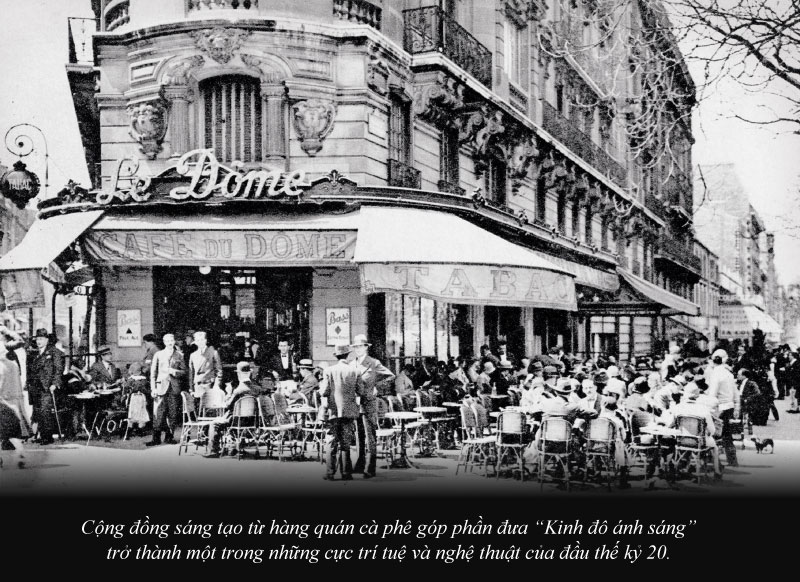
The creative community from cafes contributed to making the “City of Light” one of the intellectual and artistic pillars of the early 20th century
In particular, the creative community recognized the obvious importance of personal mindfulness, and conscious behavioral motivations to recreate the world as its aspiration, even amid chaos. The wave of creative freedom exploded in all fields of literature, painting, music, film, etc., promoting the birth of a series of movements that influenced human civilization such as: Surrealism, Art Deco, Dadaism, Expressionism, Cubism, flapper fashion, literary iceberg theory, the development of Dance music, musical studios, cinemas, etc. The impact of “The Lost Generation” changed the thinking and social lifestyle. This caused collective awakening and the emergence of new values called Modernism, which encouraged young people to choose their own future. This is also the period when the most famous geniuses of the 20th century appeared: Gertrude Stein, Ernest Miller Hemingway, Francis Scott Fitzgerald, Thomas Stearns Eliot, Van Gogh, Pablo Picasso, Amedeo Modigliani, Igor Stravinsky, Erik Satie…
The new vitality formed from the coffee shop opened a new era of initiation. Belief in a good society in which each individual can live according to the value system set by himself in the process of transcending himself to contribute more to the world. Therefore, instead of being uncertain, people tended to be self-aware and creative to reinvent themselves. At the same time, they looked forward to the future with great achievements. Coffee and coffee shops in this regeneration process were not a refuge, but a necessary way and place to find the meaning of existence, helped people find themselves, contributed to the sublimation of the meaning of life.
THE REAL COFFEE
ROASTED ONLY FOR PEOPLE OF WISDOM!
Source: “The Philosophical Way of Coffee” – copyright by Trung Nguyen Legend

